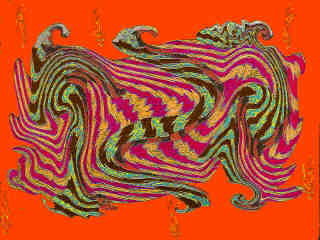^
Died on 19 June 1805: Louis-Jean-François
Lagrenée l'aîné, Parisian Neoclassical
painter born on 21 January 1725.
— Louis Lagrenée was the brother and teacher of Jean-Jacques
Lagrenée [18 Sep 1739 – 13 Feb 1821]. From 1760 to 1762 the brothers
were together in Russia, Louis having been invited there by Empress Elizabeth.
Each brother also spent time at the Académie de France at Rome, before returning
to France to pursue a career as a painter. Louis’s son François Lagrenée
[1774–1832] was also a painter, who worked in a style much influenced by
that of his father and his uncle.
— Louis Lagrenée was a student of Carle
Vanloo and won the Prix de Rome in 1749. He stayed for only one year
at the Académie de France in Rome (1754). On his return to Paris in 1755
he was received (reçu) as a member by the Académie Royale on presentation
of the Rape of Dejanira (Paris, Louvre), a work inspired by Guido
Reni’s painting of the same subject in the French royal collection. There
followed a career filled with success and honors: from 1760 to 1762 he was
Director of the St Petersburg Academy. In 1762 he was appointed a professor
at the Académie Royale in Paris. Later, from 1781 to 1785, he was Director
of the Académie de France in Rome, and in the latter year he became Recteur
of the Académie Royale. From 1804 he was appointed a curator of the new
national museums.
— Lagrenée l'aîné was a winner of the Rome Prize,
academician, director of the St. Petersburg Academy, then the French Academy
in Rome, he specialized in historical scenes or scenes from Antiquity.
— As a student, Louis Lagrenée won the Grand Prix at the Académie
Royale de Peinture et de Sculpture in 1749. Following a brief stay in
Rome, he was received into the Académie in 1755 with the completion of a
painting that earned him favorable comparisons to Guido Reni. From 1760
until 1762, he directed the Saint Petersburg Academy at the Russian court.
Upon his return to Paris, Lagrenée became a professor at the Académie and
received a range of important public commissions, excelling at medium-size
and small paintings.
A virtuoso of fine craftsmanship, Lagrenée
was one of three painters responsible for the transformation of French painting
away from the Rococo
style towards a more restrained, classicizing
idiom. He deliberately rejected the exuberant, artificial aesthetic of the
mid-1700s, reviving instead the previous century's taste for an elegant,
polished style.
— The students of Lagrenée l'aîné included, besides Lagrenée
le jeune, Dmitry Levitsky, Pierre Peyron, L. M. A. Bilcoq.
— Horatius
after Striking his Sister (1754, 95x134cm). The companion piece is A
War Offering Made the Day Before Battle by the Samnites who Swore to Sacrifice
Themselves for their Homeland. The episode depicted is taken from Livy's
History of Rome (Bk. 1, XXVI): After defeating the Curiatii, the last of
the three Horatii brothers meets his sister, who had been betrothed to one
of the dead champions. The young woman is "in tears [...] The proud young
man is overcome by anger at his sister's lamentations amid the crowd's transports
of joy celebrating his victory. He draws his sword and as he strikes the
young woman, he showers her with reproach: "Take your scandalous love away!
Go and join your fiancé [...] you who have forgotten your homeland! So dies
any Roman woman who would mourn an enemy."
— Mars
& Venus, an Allegory of Peace (1770, 64x54cm) _ Mars, the god of War,
throws back the rich green bed curtains that frame this gentle allegory
of peace. As the drapery parts, the morning light spills in to reveal the
form of the sleeping Venus, the Roman goddess of love. Mars gazes at her,
utterly captivated by her beauty. Her love has tempered his fierce character,
and his shield and sword lie abandoned on the floor. Echoing the lovers'
bliss, a pair of white doves, symbolizing Peace, build a nest in Mars's
helmet. Lagrenée created his finest works, including this small, jewel-like
painting, around 1770. The lavish folds of drapery, the delicate play of
light over fabric and skin, and the rich, restrained palette combine to
create a captivatingly beautiful image.
— Pygmalion
and Galatea (1781, oval 58x48cm; 923x760pix, 58kb) _ Ovid, in his Metamorphoses
(translation),
says that Greek mythological king Pygmalion, who was also a sculptor, made
an ivory statue representing his ideal of womanhood and then fell in love
with his own creation (which, according to later retelling of the story,
he named Galatea); the goddess Venus brought the statue to life in answer
to his prayer.
The story was the inspiration for many artists
besides Lagrenée. Jean-Léon
Gérôme [11 May 1824 – 10 Jan 1904] made at least two different
paintings of the moment of transformation: Pygmalion
and Galatea (1890, 89x69cm; 507x420pix, 40kb) and Pygmalion
and Galatea (1890, 89x69cm; 327x225pix, 25kb). Le
Moyne painted Pygmalion
Seeing His Statue Come to Life (954x760pix, 72kb). Burne-Jones
painted two versions (1870 and 1878) of a Pygmalion Series of four paintings:
The
Heart Desires (1870), The
Hand Refrains (1870; 652x490pix, 33kb), The
Godhead Fires (1870; 646x491pix, 36kb), The
Soul Attains (1870, 645x491pix, 19kb), The
Soul Attains (1878, 99x76cm; 853x636pix, 99kb). Watts
[1817-1904] painted The
Wife of Pygmalion (1868, 66x53cm; 700x577pix, 112kb). Boucher painted
Pygmalion
and Galatea (1767; 483x700pix, 92kb). Eoin de Leastar painted Pygmalion
(374x302pix, 30kb).
The play Pygmalion (1912), by George
Bernard Shaw [26 Jul 1856 – 02 Nov 1950], inspired the musical My
Fair Lady (1956) of librettist Alan Jay Lerner [31 Aug 1918 –
14 Jun 1986] and composer Frederick Loewe [10 Jun 1901 – 14 Feb 1988].
|
 site safe for children
site safe for children 
